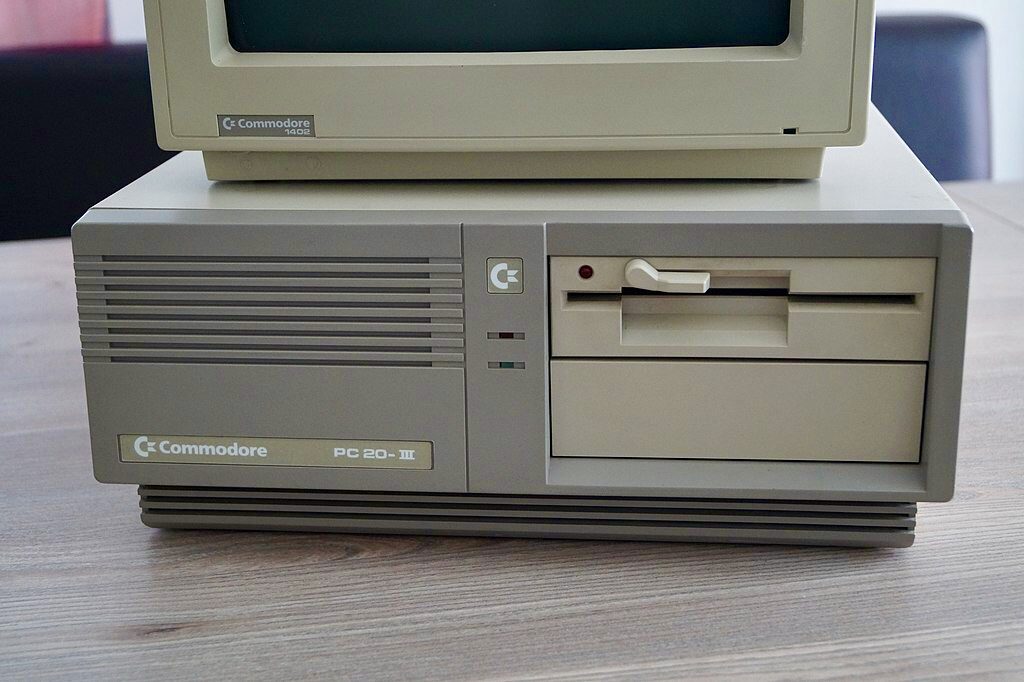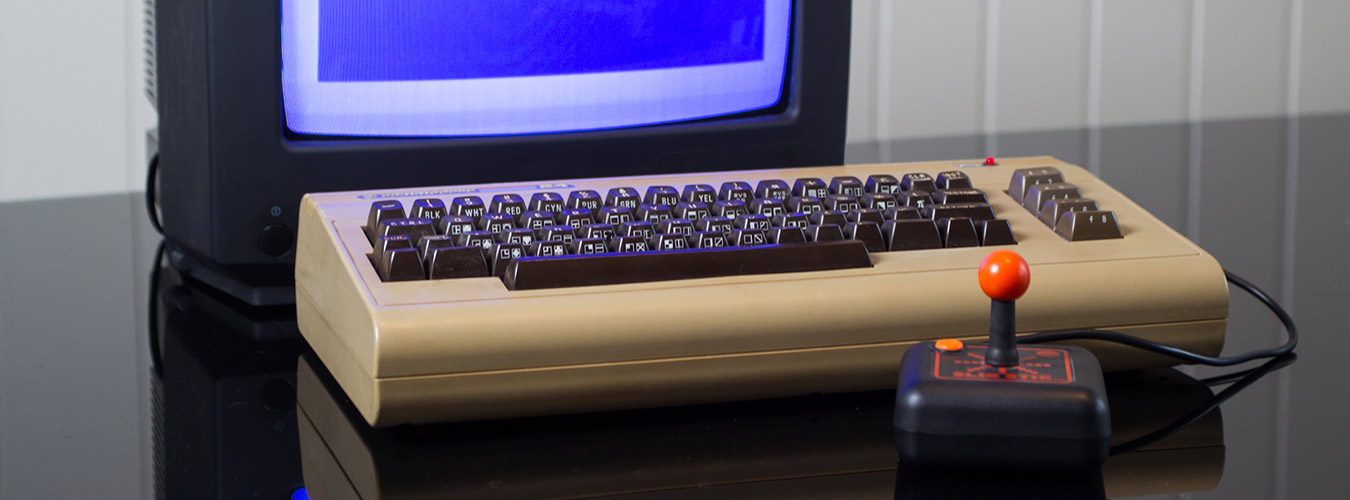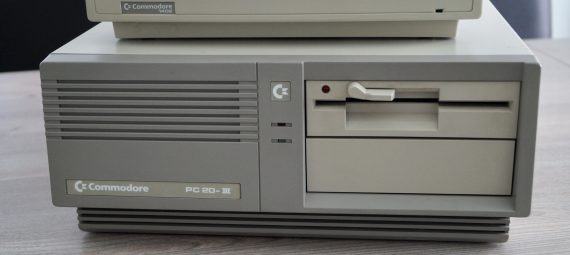Released 1988: The Commodore PC20-III is a home/business desktop computer in the range of Commodore International’s IBM PC compatible line. PC-10-III and 20-III were re-designed Commodore PCs with smaller casing, more compact mainboard with many built-in features. Mainboard has onboard video that features the Paradise PVC4 which functions pretty much just like an ATI small wonder CGA card and can output MDA, Hercules, CGA and special Plantronics modes (not much software supported it). It also has onboard serial- and parallell ports, floppy disk controller, hard disk controller, RTC (real time clock), and a special mouse port for using an Amiga compatible mouse like the Commodore 1352.
CPU frequency is adjustable for maximum software compatibility, 4.77 MHz (standard), 7.16 MHz (turbo), 9.54 MHz (double). It has full 640kB of RAM which is the maximum on an XT with 8088 CPU. PC20-III has a 20MB hard disk. Hard disks used a new interface called XTA (XT Attachment) which was a predecessor of IDE.
Facts
- Type: Personal computer
- Manufacturer: Commodore
- Released: 1988
- OS: Commodore MS-DOS 3.2
- CPU: Intel 8088 @ 9.54 MHz (adjustable 4.77, 7.16 or 9.54 MHz)
- Memory: 640 KB RAM
- Graphics: MDA, Hercules, CGA (config by DIP switches)
- Audio: PC speaker (1 bit)
- Internal storage: 20 MB XTA HDD (PC20-III)
- Removable storage: 360KB 5.25″ FFD
- FPU: Optional 8087
- Expansion slots: 3 x ISA-8
- Predecessor: Commodore CBM II-series, Commodore PC-5, PC20-II
- Successor: Commodore PC30/PC40-III
Background history: In 1984 Commodore signed a deal with Intel to second source manufacture the Intel 8088 CPU used in the IBM PC. Commodore also abandoned their own business line of Computers, the CBM-II series in 1984. The CBM-II line in turn was released only two years earlier, in 1982 to replace the CBM/PET-series. The CBM-II series was made with an expansion port to expand with an optional Intel 8088 CPU card to run MS-DOS 2.1. The Intel 8088 CPU card for CBM-II Series was never officially released or sold by Commodore, but working units produced by Commodore exist today.
Incompatible with their own Commodore 64/128 and Amiga architectures, they were generally regarded as good, serviceable workhorses with nothing special, but the established Commodore name was seen as a competitive asset. I personally remember Commodore PC clones being used in offices in the company where I worked during school vocations, so they were pretty common. Commodore became the third largest distributor of PC compatibles here in Norway, in addition to their other very successful lines of computers like the Commodore 64/128 and Amiga-family.

My Commodore PC20-III
This Commodore PC looked cosmetical like new from the outside. But when I turned it on, the display was scrambled. I took it apart and discovered it had a leaking RTC battery which had damaged some traces on the mainboard.
- Removed leaking RTC battery and cleaned ‘greenish’ battery residents from mainboard
- Repaired damaged traces and VIA by soldering jump wires.
- Replaced two resistors due to battery leak residents.
- Mounted a ‘coin cell’ type battery holder with a diode to prevent charging a non-chargeable battery. Used leads soldered on to the main board so the battery could be placed in a position which are easy reachable when battery needs to be replaced.


I purchased this Commodore PC 20-III, Monitor and Keyboard between 25 and 30 years ago. Long before I knew anything about computers. It’s still setting, unused, in the same place.. I don’t think it has a disk inside. Monitor has LASER on front, Keyboard is model No. KPG-E99YC. Thanks, Paul in Virginia, USA
Still some to be found around 🙂